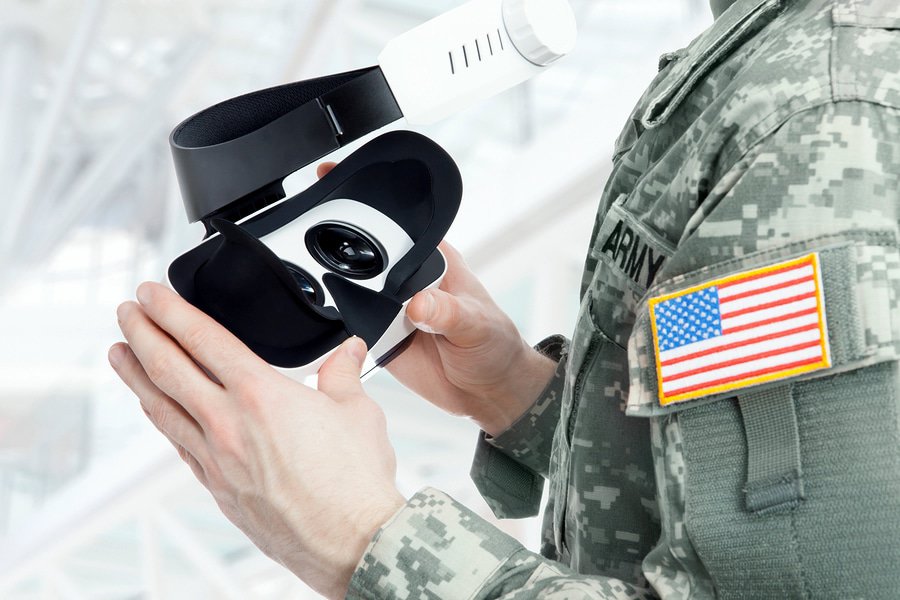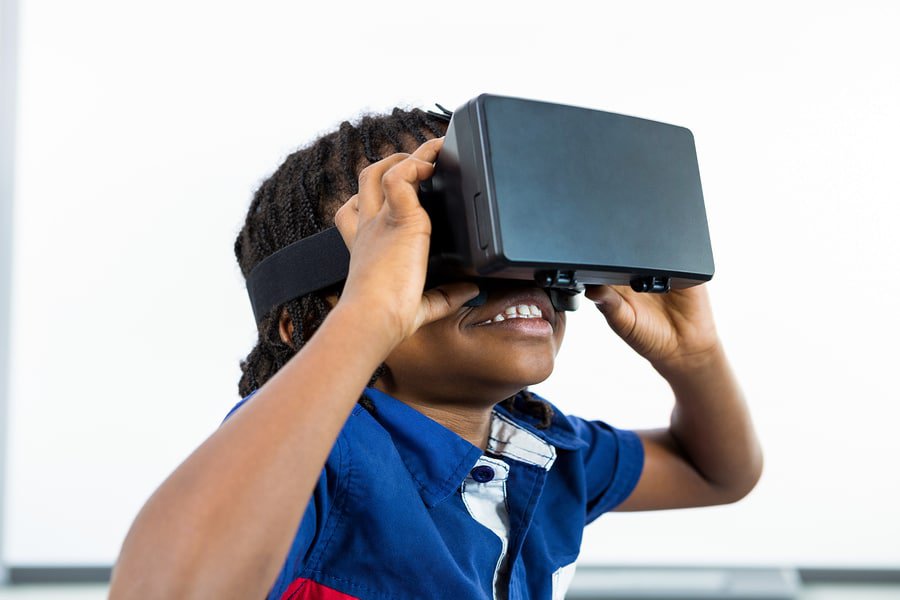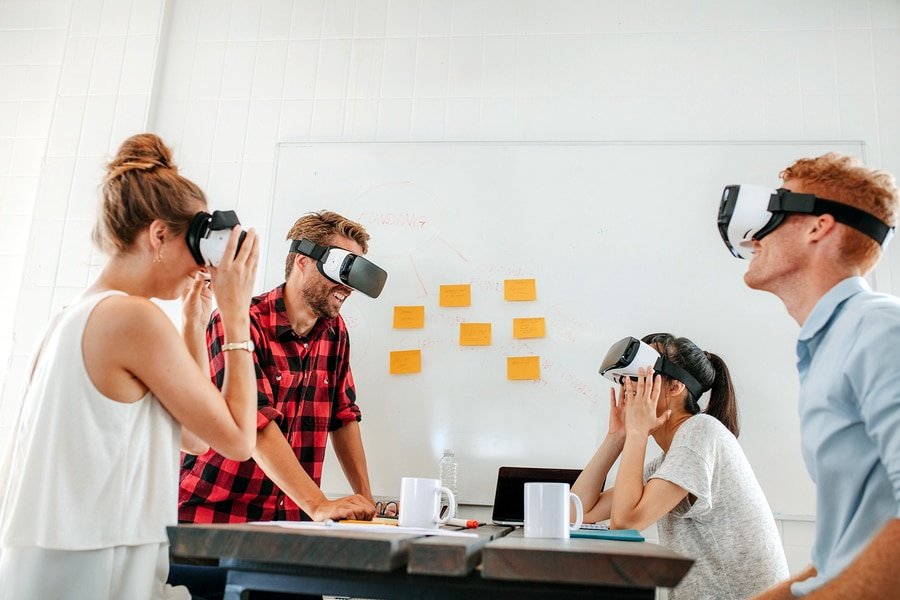By now, we know the many uses of virtual reality in gaming. You might have watched your family members put on a headset at the last family gathering — maybe you even tried it on yourself. Immersing yourself in an alternate reality for the first time can be both exhilarating and maybe even a little frightening — but it’s something you simply must try at least once.
But beyond the scope of gaming, virtual reality can be used in many different real-world scenarios and can be very beneficial to those fortunate enough to experience it. As the technology is more widely accepted, we are finding that the possible uses of virtual reality are nearly endless.
There’s no doubt about it — virtual reality has the power to change lives. Here are five practical, but exciting uses for virtual reality that might just blow your mind.
1. Military Training
Training is obviously a substantial part of being in the military. From weaponry to survival skills to physical fitness, military personnel are some of the most highly trained on Earth, but that training comes at a cost — a big one. Military training is an extensive, expensive, and continuous undertaking that involves far more personnel than just the soldiers being trained.

Because of the intensive nature of training all branches of the armed forces, militaries around the world have started implementing super practical uses for virtual reality, including flight and combat simulation, battlefield medical training, and driving simulations. Training officers find that virtually simulated training exercises are both cheaper and safer than say, setting up a combat simulation involving explosives and gunfire.
In that type of simulation activity, multiple trained soldiers must be involved (to fire blanks in place of the enemy), in addition to non-lethal explosives in place of bombs or grenades. Not only does it require more personnel, but it’s still dangerous for all those involved. If a simulation like this were done in virtual reality, it would require less people and perhaps even less props.
Not only does virtual reality make training less labor intensive, it also makes it more versatile. Just like traditional training exercises, multiple trainees can be on one simulation at the same time. Simulations can be created for almost every imaginable scenario and rotated as necessary. This is also true in flight simulations, which are both expensive for the military and dangerous for pilots.
Of course, there is no substitute for real life experience. At some point, pilots have to get in the cockpit and some Marines will have to walk into a combat zone. But as far as we’re concerned, military training is an amazing use for virtual reality and we hope it helps keep our servicemen and women safer and better prepared.
2. Treatment of PTSD
Speaking of our servicemen and women, some of them may see combat at various points during their enlistment period — and a percentage of them will experience post-traumatic stress disorder, or PTSD. According to the U.S. Department of Veterans Affairs, between 11 and 20 percent of veterans serving in the second Iraq War (2001-2014) have suffered from PTSD in a given year.
Some soldiers are seeing a unique use for virtual reality here. By using VR to put themselves (safely) into a situation that triggers them, they are able to learn how to control their physiological and psychological responses.
For example, some soldiers with PTSD are triggered by loud environments because of the noise from active combat. In this case, virtual reality can be used to put the soldier in a noisy environment, such as a theme park or crowded room. If the simulation is too overwhelming, he or she (or a licensed therapist) can simply stop it. Otherwise, the soldier can practice relaxation exercises (such as deep breathing techniques) that keep anxiety and panic attacks at bay.
VR simulations can even take the soldier back to the original event that caused the PTSD to begin with (if it can be traced back to one event — sometimes, it’s an accumulation of multiple events). In this case, the use for virtual reality is the same: to help the soldier come to terms with the series of events and then control the effects on the mind and body. If the soldier can understand the traumatic event, they might feel more equipped to make peace with it and move on.
3. Education
Perhaps one of the most obvious uses for virtual reality is in education. VR lets us get deep into a subject in a way that most students wouldn’t experience unless they were heavily specialized and likely, far along in their education. But most importantly, it allows students to be actively engaged in learning — something teachers sometimes struggle with in a traditional classroom.

Much like military training, some devices used in medical education, specifically, are very expensive to both use and produce. Studying anatomy, for example, is something most people start in books. They study pictures and drawings for years before being able to actually cut into something — since not many pre-med programs are letting their newbies cut into expensive one-use-only cadavers.
During their residency, med students are allowed to start assisting in the operating room, eventually performing surgery on their own. Prior to their first solo cut, they practice on cadavers or specialized equipment made for that procedure. But some are lucky enough to use virtual reality when preparing for a robotic surgery, which can almost feel like the real thing when combined with haptic feedback.
But some programs are being developed to help people understand physical anatomy prior to the cadaver-cutting phase. World of Comenius uses virtual reality to explore the human anatomy, even diving into specific parts by letting the user see the inside of arteries and brain synapses. It’s pretty incredible, but you’ll just have to see it to believe it.
Dental students are also seeing innovative uses for virtual reality. Programs can walk a student through an entire procedure from start to finish. Each simulation can have a different patient history and procedure requirements. One program used for dental implant training is even designed to exhibit different patient personalities so the student learns how to adapt to varying patient needs.
On a more widespread scale, Google launched Expeditions as a way to find uses for virtual reality in the everyday classroom. Teachers can purchase a starter kit or build their own using Google Cardboard and smartphones. There are hundreds of expeditions that could be used in a variety of subjects like biology, history, architecture, and even career services.
Just like military training, virtual reality in education is certainly not meant to replace real experience, but rather to supplement it. After all, there is no substitute for actually cutting into a cadaver or diving in the Galapagos Islands. However, VR exercises may make the real life experience of med school more meaningful — or spark an interest that changes a young student’s life.

4. Nuclear Specialist Training
In our modern world, nuclear plants are a reality and for the people who work in them, life can be dangerous. In an effort to make everyday situations safer for workers, the Los Alamos National Laboratory in New Mexico (makers of the first American atomic bomb), are finding a practical use for virtual reality.
Los Alamos designed a program called VISIBLE (Virtual Simulation Baseline Experience), which they use to train their employees in a variety of ways. Coordinator of nuclear non-proliferation projects, Philip Hypes, says virtual reality lets them “learn about a facility by standing in places that would not be safe or possible to stand.”
Much like the military, both safety and expense are major concerns for Los Alamos. Hypes continues, “We can treat an entire multibillion-dollar facility as a laboratory where we can play around with different configurations of detectors and cameras and things, and essentially do experiments that would be prohibitively expensive if you tried to do them any other way.”
They even created a simulation of a reactor in Idaho prior to an on-site visit. People that used the virtual program had positive reactions when they arrived at the plant. They felt like they’d been there before. What more could you want from a virtual reality simulation? If, for example, the labs were collaborating on a project and needed to send scientists to each other’s facilities, VISIBLE could allow them to feel more comfortable with their new environment prior to setting foot in the building.

5. Crime Scene Reconstruction
The American justice system is rooted in the right to a fair trial, which involves being judged by a jury of your peers. The struggle for both the prosecution and the defense is convincing the jury that their version of the facts is the “right version” — or at the very least, that the other side’s version could be wrong. Regardless, each side is trying to sell their version of events — and sometimes, that gets complicated.
Lars Ebert works at the Institute of Forensic Medicine in Zurich, Switzerland. His job is to assist law enforcement in the gathering of evidence to be used in court. Ebert and his team realized over time that the way they see evidence is often different from the way a jury will see evidence. Specifically, the jury views evidence presented in 2D on paper, whereas forensic experts can assess three dimensions during collection — which can have an impact on how the information is interpreted.
To help bridge this gap, Ebert’s team came up with a groundbreaking use for virtual reality: crime scene reconstruction. By using the Oculus Rift and compatible software, they were able to recreate a crime scene in 3D, complete with bullet trajectory. They call it a “forensic holodeck,” named after the Star Trek virtual reality system.
In theory, the forensic holodeck would be used in courtrooms to help jurors better understand the crime scene — but the prosecution would have their own version, while the defense would have another. This use for virtual reality could offer a unique perspective for jurors, who otherwise might not have been able to fully grasp the entire crime scene.
While this type of crime scene reconstruction is not fully tested, nor widely adopted, another possible use for virtual reality in the courtroom is witness preparation. Witnesses tend to get nervous before (and during) their testimony, especially if they’ve never testified before or if they are testifying against someone who harmed them.
Allowing witnesses to use virtual reality during preparation can help people feel more comfortable, as they’ll be more familiar with the courtroom before walking in. Instead of answering questions in a lawyer’s office, they can put on a VR headset and practice “in the courtroom,” complete with stand-in jurors, a judge, an audience, and the defense team.
Time will tell if courts across the globe will adopt the use of virtual reality during trial or if it will be altogether thrown out. Changes in the justice system are typically slow and there are many reasons this technology could be disputed, only one of which is cost. Either way, it’s an interesting debate and we can’t wait to see what happens.
Future Uses for Virtual Reality
As with many other groundbreaking pieces of technology in the past hundred years, virtual reality is unlikely to fade away. As manufacturers develop cheaper head-mounted displays and the technology becomes more widely accessible, uses for virtual reality will expand.
Developers will find new ways to implement virtual reality into their apps and children will learn using entirely new methods. The average global citizen will get to experience things they never dreamed possible — whether it’s a new alternate universe or a re-creation of a real-life landmark they aren’t able to see in person. This technology is nothing short of incredible and we look forward to seeing what comes next.
What innovative use for virtual reality can you create? Proto.io lets anyone build mobile app prototypes that feel real. No coding or design skills required. Bring your ideas to life quickly! Sign up for a free 15-day trial of Proto.io today and get started on your next mobile app design.
How do you want to use virtual reality? Let us know by tweeting us @Protoio!






